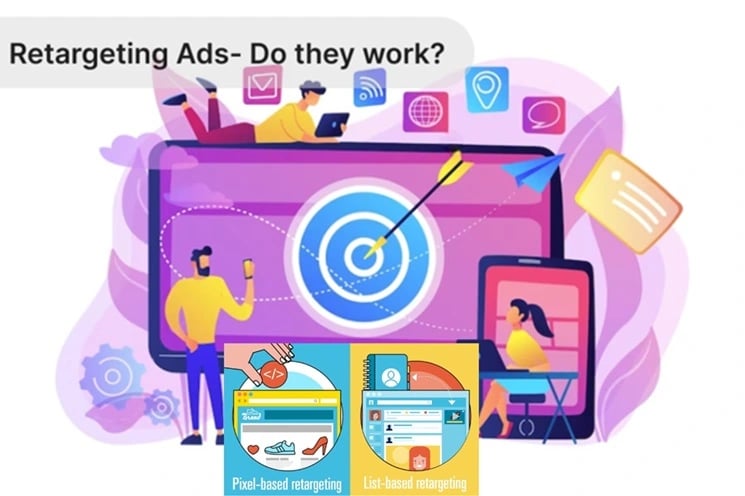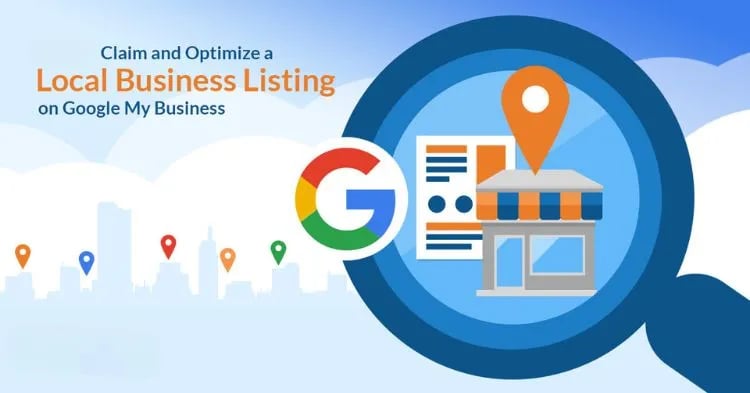
In today’s digital landscape, where a single click can make or break a business, establishing a strong personal brand is no longer a luxury, but a necessity. A well-crafted personal brand can be the difference between attracting loyal customers and losing them to the competition. It’s the key to converting website visitors into premium paying clients, generating leads, and building a reputation that resonates with your target audience. By harnessing the power of personal branding, entrepreneurs and business owners can create a unique identity that sets them apart, drives sales, and fosters long-term growth. In this digital age, can you afford to miss out on the opportunities that personal branding has to offer?
The Rise of Personal Branding
Around the world, individuals are recognizing the importance of building a personal brand. It’s no longer just about having a business or a website; it’s about creating a unique identity that sets you apart from others and resonates with your target audience.
Defining Personal Branding
With the rise of social media and online platforms, personal branding has become more accessible than ever. At its core, personal branding is about showcasing your values, skills, and personality to establish a unique identity that attracts like-minded individuals. It’s not just about self-promotion; it’s about building trust, credibility, and relationships with your audience.
When done correctly, personal branding can open doors to new opportunities, increase your visibility, and help you stand out in a crowded market. It’s about being authentic, consistent, and intentional in your online presence, ensuring that your message resonates with your target audience.
The Shift from Traditional to Digital Branding
With the advent of digital technology, traditional branding methods are no longer sufficient. Gone are the days of relying solely on print ads, billboards, and word-of-mouth marketing. Today, businesses and individuals must adapt to the digital landscape, where online presence and reputation are crucial.
With the rise of e-commerce, social media, and online reviews, customers have more power than ever before. They can research, compare, and make informed decisions about the brands they want to engage with. As a result, businesses must prioritize building a strong online presence, including a website, social media profiles, and consistent branding across all platforms.
Branding in the digital age is about creating a seamless experience for your customers, from the moment they land on your website to the follow-up conversations and reminders. It’s about using data and analytics to refine your message, targeting the right audience, and maximizing your return on investment. By leveraging digital branding strategies, businesses can increase conversions, build loyalty, and establish a strong reputation in the market.
Building a Strong Online Presence

The digital age has made it imperative for individuals to establish a strong online presence, especially when it comes to personal branding. A well-crafted online presence can help you stand out in a crowded market, attract potential customers, and ultimately drive business growth.
A strong online presence begins with a professional website that effectively communicates your unique value proposition, showcases your skills and expertise, and provides a seamless user experience. Your website is often the first point of contact between you and your potential customers, making it a crucial element in building trust and credibility.
Crafting a Unique Value Proposition
On the path to building a strong online presence, crafting a unique value proposition (UVP) is a critical step. Your UVP is what sets you apart from others in your industry and communicates the benefits that you bring to your customers. A well-crafted UVP can help you attract high-quality leads, increase conversion rates, and establish a loyal customer base.
To craft a compelling UVP, you need to identify what makes you unique, what problems you solve for your customers, and what benefits you offer that others don’t. Your UVP should be clear, concise, and communicated consistently across all your online platforms.
Developing a Consistent Visual Identity
Crafting a consistent visual identity is crucial to building a strong online presence. Your visual identity includes elements such as your logo, color palette, typography, and imagery, which work together to create a cohesive brand image.
A consistent visual identity helps to establish recognition, build trust, and create an emotional connection with your audience. It also communicates your values, personality, and expertise, making it easier for customers to relate to you and your business.
For instance, a well-designed logo can help you stand out in a crowded market, while a consistent color palette can evoke emotions and create brand recognition. By developing a consistent visual identity, you can create a lasting impression on your customers and establish a strong online presence.
Leveraging Social Media Platforms
An effective social media strategy is crucial to building a strong online presence. Social media platforms provide a unique opportunity to connect with your audience, share your expertise, and build a community around your brand.
By leveraging social media platforms, you can increase brand awareness, drive website traffic, and generate leads. You can share valuable content, engage with your audience, and participate in relevant conversations to establish yourself as a thought leader in your industry.
Strong social media profiles can also help to establish credibility and trust with your audience. By sharing customer testimonials, showcasing your products or services, and providing exclusive offers, you can create a loyal customer base and drive business growth.
Authenticity and Transparency in Personal Branding

Now, more than ever, authenticity and transparency are crucial components of personal branding in the digital age. In a world where consumers are bombarded with advertisements and marketing messages, it’s vital to stand out by being genuine and relatable.
The Importance of Being Genuine
One of the most significant advantages of personal branding is the ability to build trust with your audience. When you’re authentic and genuine, people are more likely to resonate with your message and feel comfortable doing business with you. A genuine personal brand helps to establish credibility and authority in your industry, making it easier to attract customers and generate leads.
In today’s digital landscape, it’s easy to spot a fake or someone trying to manipulate their online image. People can smell insincerity from a mile away, and it can be detrimental to your business. By being true to yourself and your values, you’ll attract the right audience and build a loyal following.
Sharing Personal Stories and Experiences
Genuine storytelling is a powerful way to connect with your audience and build a strong personal brand. When you share personal stories and experiences, you’re showing your human side and making yourself more relatable. This helps to establish an emotional connection with your audience, making them more likely to engage with your business and become loyal customers.
This type of storytelling also helps to showcase your expertise and authority in your industry. By sharing lessons learned and challenges overcome, you’re demonstrating your knowledge and experience, making it easier to attract high-quality leads and convert them into paying customers.
Sharing Personal Stories and Experiences
This level of vulnerability and openness can be intimidating, but it’s vital for building a strong personal brand. When you share your personal stories and experiences, you’re showing your audience that you’re not just a business, but a real person with feelings and emotions.
Embracing Vulnerability and Imperfection
Transparency is key to building trust with your audience. When you’re willing to be vulnerable and show your imperfections, you’re humanizing your brand and making it more relatable. This helps to establish a deeper connection with your audience, making them more likely to engage with your business and become loyal customers.
Embracing vulnerability and imperfection also helps to showcase your authenticity and credibility. When you’re willing to admit your mistakes and weaknesses, you’re demonstrating a level of honesty and integrity that’s rare in today’s business world.
Embracing Vulnerability and Imperfection
Personal branding is not about creating a perfect image; it’s about being real and relatable. When you’re willing to embrace vulnerability and imperfection, you’re showing your audience that you’re a real person, not just a polished website or social media profile. This helps to build trust and credibility, making it easier to attract high-quality leads and convert them into paying customers.
Networking and Collaboration in the Digital Age

Your personal brand is not an island, and its growth depends on the connections you make with others in your industry. In the digital age, networking and collaboration have become more accessible and crucial than ever. As I mentioned in my previous article, The Power of Personal Branding in the Digital Age, building a strong online presence is key to establishing yourself as an authority in your field.
Building Relationships through Online Communities
To expand your network, you need to be where your target audience is. Join online communities related to your industry, participate in discussions, and offer valuable insights. This will help you build relationships with potential customers, partners, and collaborators. Engage with others on platforms like LinkedIn, Twitter, or Facebook groups, and make sure your website and business are consistently represented across all channels.
By being an active and contributing member of online communities, you can establish yourself as a thought leader and build trust with your audience. This, in turn, can lead to new business opportunities, partnerships, and even media coverage. Recall, your online presence is an extension of your personal brand, so ensure that your website design and social media profiles accurately reflect your values and expertise.
Collaborating with Influencers and Peers
The power of collaboration cannot be overstated. Partnering with influencers and peers in your industry can help you tap into new audiences, gain credibility, and stay ahead of the curve. Identify individuals who share your values and target audience, and reach out to them to explore potential collaboration opportunities.
It’s imperative to approach collaborations with a clear understanding of what you can offer and what you hope to achieve. Be respectful of others’ time and expertise, and be open to learning from them. By doing so, you can build meaningful relationships that benefit both parties and ultimately enhance your personal brand.
Collaborations can take many forms, from guest blogging and podcasting to webinars and joint ventures. The key is to find opportunities that align with your goals and values, and to approach them with a spirit of mutual benefit and respect.
Participating in Online Events and Webinars
Events and webinars have become increasingly popular in the digital age, offering a unique opportunity to connect with others in real-time. Participate in online events that align with your industry and interests, and use them as a chance to network, learn, and establish yourself as an expert.
By attending online events and webinars, you can expand your network, gain new insights, and stay up-to-date on the latest trends and developments in your field. Make sure to engage with others, ask questions, and share your own experiences to get the most out of these opportunities.
Understanding the value of online events and webinars, many businesses are now using them as a way to connect with customers, generate leads, and build brand reputation. By participating in these events, you can not only enhance your personal brand but also gain a competitive edge in your industry.
Content Creation and Storytelling
Despite the rise of digital noise, personal branding still relies heavily on effective content creation and storytelling. In today’s digital landscape, it’s not enough to simply exist online; you need to create content that resonates with your audience, builds trust, and establishes your authority in your industry.
Developing a Content Strategy
The key to successful content creation lies in developing a well-thought-out strategy that aligns with your personal brand goals. This involves understanding your target audience, identifying the platforms they frequent, and crafting content that speaks directly to their needs and pain points. A solid content strategy will help you stay focused, ensure consistency, and maximize your online presence.
By taking the time to develop a comprehensive content strategy, you’ll be able to create content that resonates with your audience, builds trust, and establishes your authority in your industry. This, in turn, will attract more customers, generate leads, and ultimately drive business growth.
Crafting Compelling Headlines and Taglines
One of the most critical elements of effective content creation is crafting compelling headlines and taglines that grab attention, convey your unique value proposition, and leave a lasting impression. Your headlines and taglines are often the first point of contact between you and your audience, making them a crucial aspect of your personal brand.
A well-crafted headline or tagline can make all the difference in capturing the attention of potential customers, setting you apart from the competition, and driving business results. By investing time and effort into crafting headlines and taglines that truly resonate with your audience, you’ll be able to attract more leads, drive conversions, and build a loyal customer base.
With the rise of online noise, it’s more important than ever to craft headlines and taglines that cut through the clutter, speak directly to your audience, and convey your unique value proposition. By doing so, you’ll be able to establish a strong online presence, build trust with your audience, and drive business growth.
Using Visual Content to Tell Stories
Crafting a compelling visual brand is important in today’s digital landscape. Visual content has the power to tell stories, evoke emotions, and create lasting connections with your audience. By incorporating high-quality visuals into your content strategy, you’ll be able to convey complex ideas, showcase your personality, and build a strong online presence.
Whether it’s through website design, social media, or advertising, visual content has the power to drive business results. By investing in a professional website design that reflects your personal brand, you’ll be able to attract more customers, generate leads, and drive conversions. Similarly, by using high-quality visuals on social media, you’ll be able to build a loyal following, increase engagement, and drive business growth.
Developing a strong visual brand requires a deep understanding of your target audience, your industry, and your personal brand goals. By taking the time to craft a visual brand that truly resonates with your audience, you’ll be able to establish a strong online presence, build trust, and drive business results.
Measuring Success and Overcoming Challenges

Many personal branding efforts fail because individuals don’t know how to measure their success or overcome the challenges that arise. In this chapter, we’ll explore the importance of setting goals, tracking progress, dealing with criticism, and staying adaptable in a rapidly changing landscape.
Setting Goals and Tracking Progress
The key to measuring success is to set clear, measurable goals for your personal brand. What do you want to achieve? Is it to increase website traffic, generate more leads, or establish yourself as a thought leader in your industry? Once you’ve set your goals, track your progress regularly. Use analytics tools to monitor your website traffic, engagement rates, and lead generation. This will help you identify areas for improvement and adjust your strategy accordingly.
By setting specific, achievable goals, you’ll be able to measure your success and stay motivated. For example, if you’re a business owner, you may want to set a goal to increase your website conversions by 20% within the next quarter. By tracking your progress, you’ll be able to see how effective your personal branding efforts are and make adjustments to achieve your goal.
Dealing with Criticism and Negative Feedback
Measuring success isn’t always easy, especially when faced with criticism and negative feedback. However, it’s important to remember that criticism is an opportunity to learn and grow. When faced with negative feedback, take a step back, and assess the situation objectively. Is the criticism constructive, or is it simply a personal attack? Use the feedback to improve your personal brand and provide better value to your customers.
Feedback is an important part of building a strong personal brand. It allows you to identify areas for improvement and make adjustments to better serve your customers. By embracing criticism and using it to fuel your growth, you’ll be able to build a loyal following and establish yourself as a trusted authority in your industry.
Staying Adaptable in a Rapidly Changing Landscape
Goals and strategies are not set in stone. The digital landscape is constantly evolving, and it’s important to stay adaptable to remain relevant. As new trends and technologies emerge, be willing to pivot and adjust your strategy. This may involve redesigning your website, adjusting your social media strategy, or exploring new advertising channels.
Criticism and negative feedback can also help you stay adaptable. By listening to your customers and making adjustments based on their feedback, you’ll be able to stay ahead of the curve and provide better value to your customers. For example, if your customers are complaining about the design of your website, it may be time to consider a redesign that better reflects your brand and meets their needs. By staying adaptable and open to feedback, you’ll be able to build a strong personal brand that resonates with your customers.
To wrap up
Hence, it’s clear that personal branding in the digital age is no longer a luxury, but a necessity for individuals and businesses alike. In today’s online landscape, having a strong personal brand can be the difference between attracting customers and leads, or getting lost in the noise. Having a well-designed website and online presence is crucial for establishing credibility and trust with potential customers.
To conclude, by harnessing the power of personal branding, individuals and businesses can increase their online visibility, attract more leads, and ultimately drive conversions. Whether through website design, ecommerce solutions, brand reputation management, or social media marketing, having a strong personal brand can help you stand out in a crowded digital marketplace. So, don’t miss out on the opportunity to curate your online presence and unlock the full potential of your business – invest in personal branding today and watch your customer base grow.











